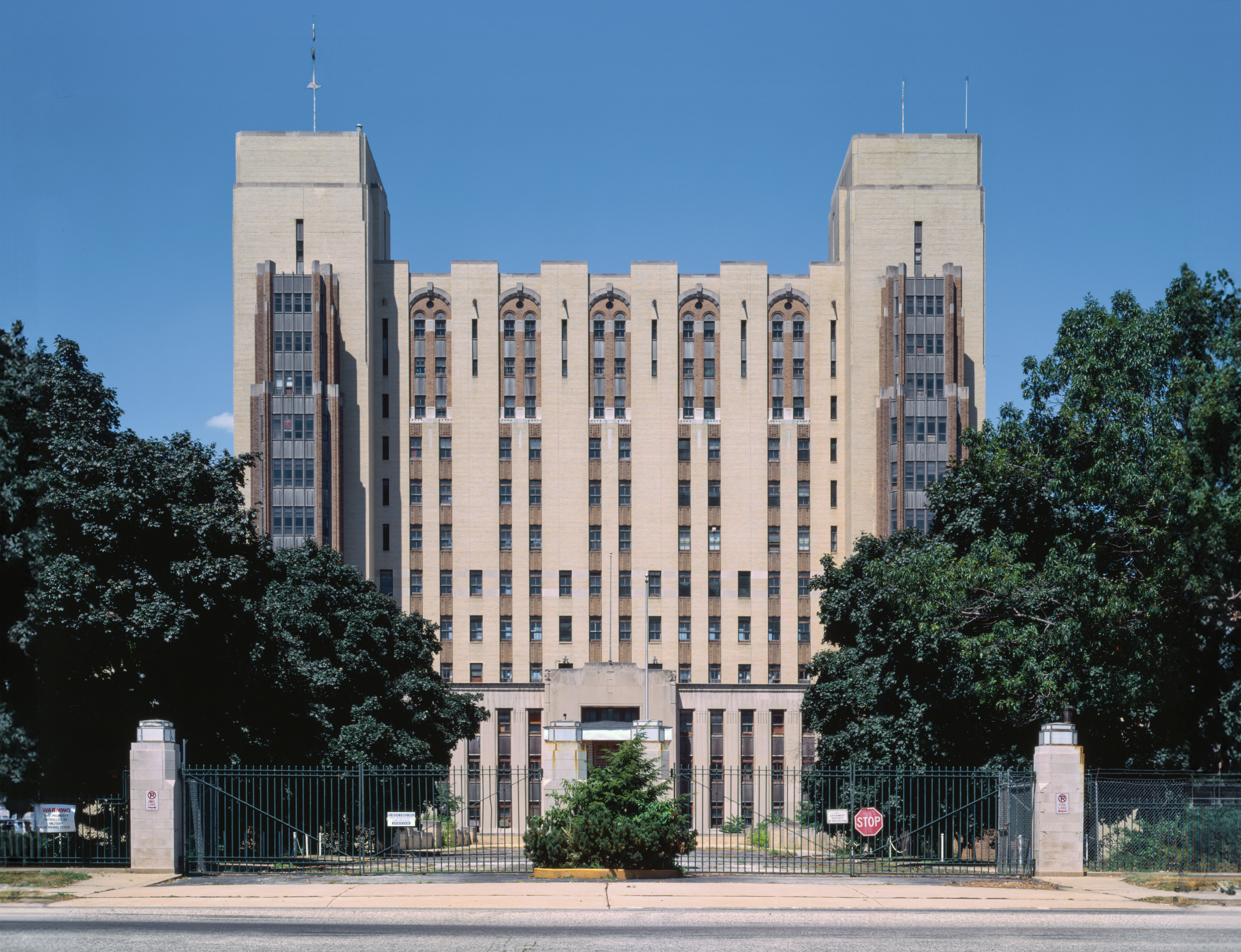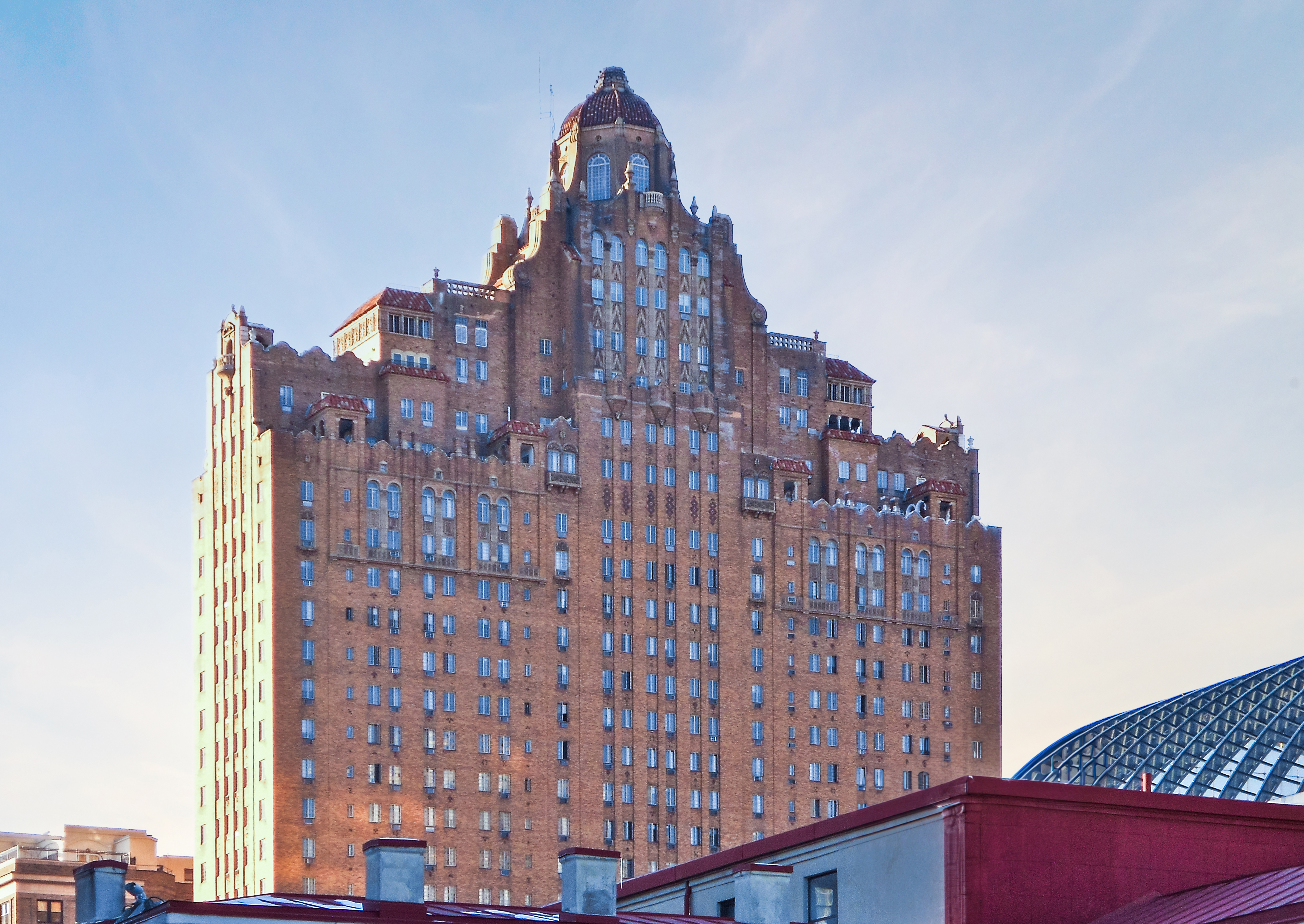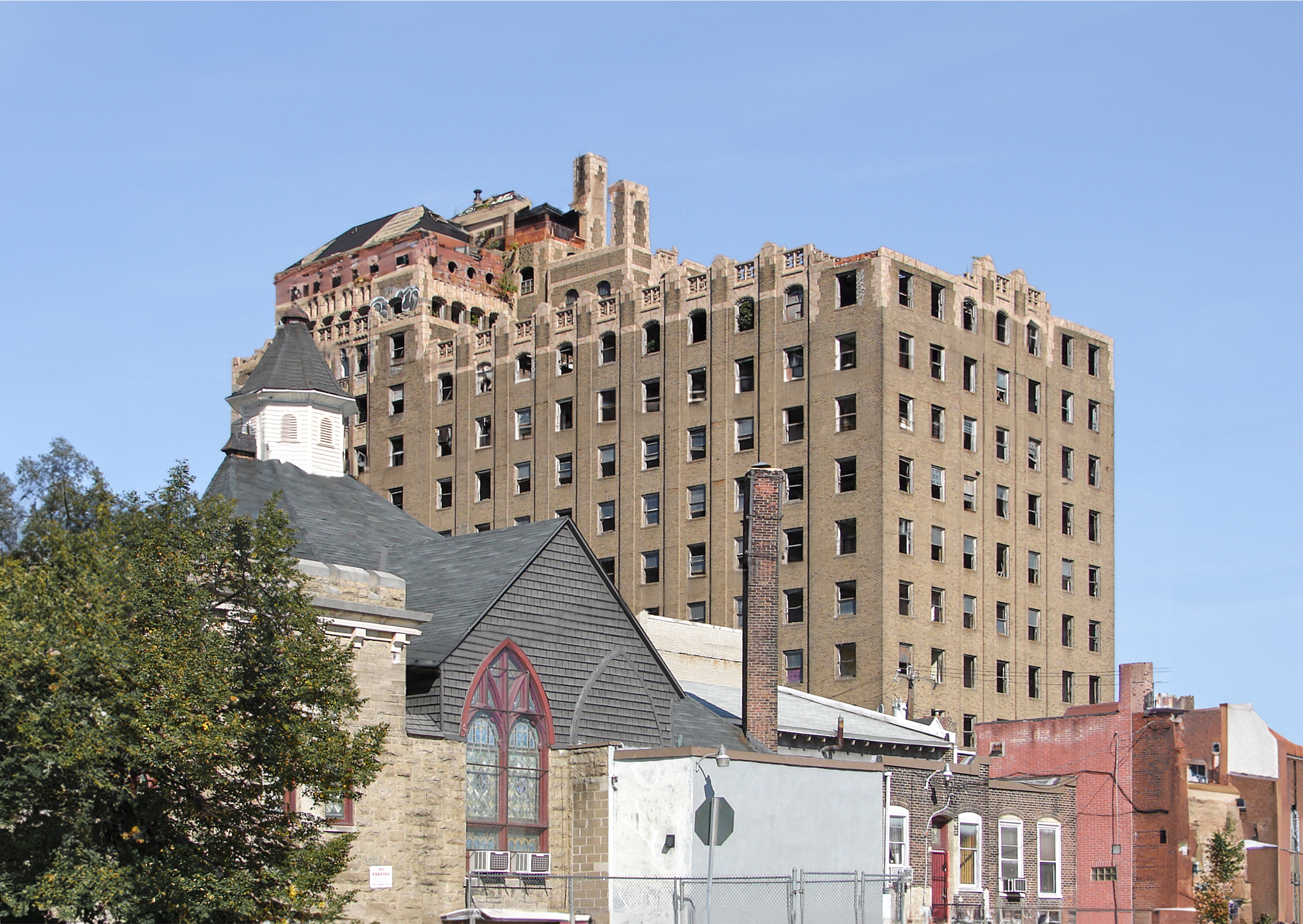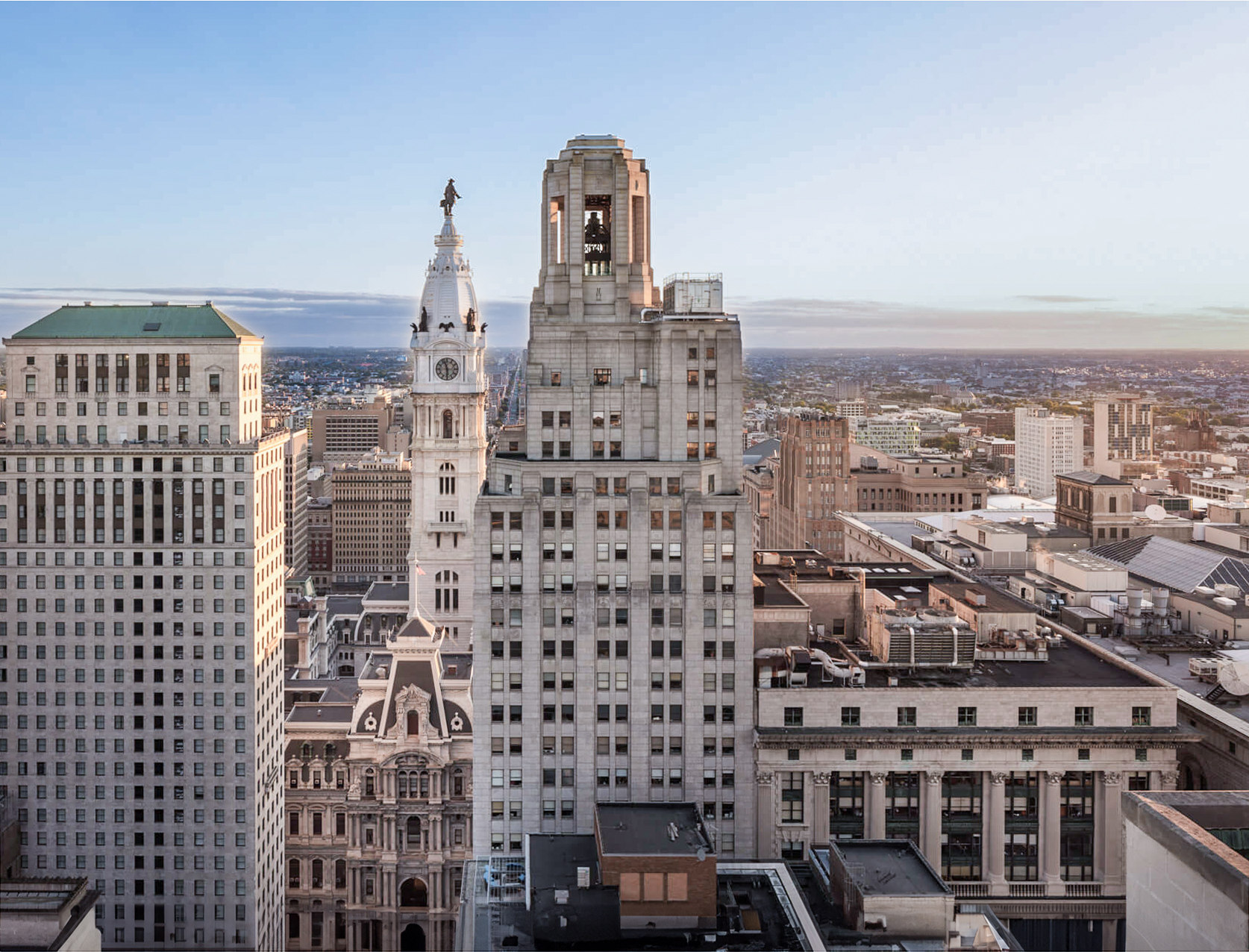The Naval Hospital Philadelphia is an Art-deco skyscraper designed by Karcher and Smith and built between 1933 and 1935, for a reported $3.19 million dollars, in Philadelphia, PA.
The exact addresss of the building was Pattison Avenue between South Broad St. to 20th St., Philadelphia, PA. However, you won't be able to find it there anymore, since it was demolished in 2001, 66 year after opening its doors to the public.





